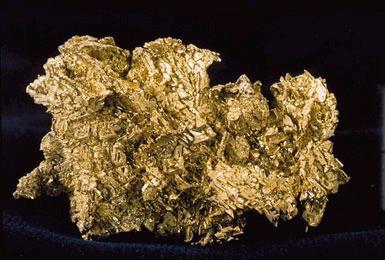

| Visitors Now: | |
| Total Visits: | |
| Total Stories: |

| Story Views | |
| Now: | |
| Last Hour: | |
| Last 24 Hours: | |
| Total: | |
Gold Investment Statistics Commentary By World Gold Council
Download this document (0.2 MB)
Overview
This commentary summarises gold’s price performance in various currencies, its volatility statistics and correlation to other assets, and the macroeconomic factors that influenced gold’s behaviour during the quarter. In this issue, we explore the influences that unconventional monetary policy has on financial markets. In particular we discuss the effect of central bank policy actions on gold.

Q3 in summary
- Gold (US$/oz) returned 11.1% in the third quarter as investors responded to further central bank measures aimed at stimulating the economy. Volatility decreased during the period, with gold prices experiencing little movement in the first half of the quarter; correlations to other assets, generally low, remained similar to those seen in Q2.
- Central banks announced a continuation of their unconventional monetary policy1programmes in Q3.
- Central banks have numerous rationales for undertaking unconventional monetary policy, including lowering borrowing costs and supporting financial markets.
- Financial assets have responded to central bank policy announcements, but gold’s reaction has been the strongest.
-
There is a consensus that these policies drive investment into gold purely due to inflation-risk impact. We believe that there is not one but four principal factors that provide further support to the investment case for gold:
- Inflation risk
- Medium-term tail-risk from imbalances
- Currency debasement and uncertainty
- Low real rates and emerging market real rate differentials
Summary of gold price performance in Q3 2012
Table 1: Performance of gold with respect to various currencies – click to enlarge
Chart 1: Gold (US$/oz) performance and key events during Q3 2012
Table 2: Timeline of central bank action in Q3 – click to enlarge
Third quarter review
By the end of September, gold (US$/oz) was up 16% year-to-date with two thirds of the gains generated in Q3. This performance was echoed in most currencies with returns ranging from 5.0% to 11.1%, using end-of-period gold price data, and 0.7% to 5.2% using average prices. The difference between these two measures reflects gold’s sharp price rise towards the end of the quarter.
Exchange rate shifts had a notable impact on some key regional gold prices. During the first half of the year Indian rupee depreciation caused the local gold price to breach a key psychological threshold, generating the strongest return of the 19 different currency-denominated gold prices monitored by the World Gold Council. That currency weakness reversed in the third quarter, leading to a modest return of 5% for gold in rupee terms. Consequently, the year-to-date performance of the rupee gold price ranked only 11th (+15.7%) as of the end of Q3.
As Chart 1 illustrates, gold’s strong performance began in earnest only in the latter half of August. The first few weeks of the quarter had been quiet for gold as well as other assets. For equities and bonds, the likely cause was a combination of northern hemisphere vacation doldrums and low conviction amidst a slowing global economy and uncertainty about the fate of the euro area.
For gold, as for many other assets, central bank policy announcements and actions in late August and early September created a catalyst for price activity. It is critical to note that while gold prices react to monetary policy developments, they are more generally determined by a geographically and thematically broad set of factors. A number of positive gold-specific developments also took place in Q3, including the IMF’s reporting of central bank purchases of gold by Russia, Turkey, Ukraine and the Kyrgyz republic. Just before the start of the third quarter, Turkey announced that it had raised to 30% the proportion of gold held by commercial banks as capital requirements. This requirement will likely boost demand as Turkish commercial banks use gold as part of their capital portfolios.
Price volatility during the period was subdued, ranging from 11.4% for rupee investors to 16.4% for yen investors. Gold’s lower than average volatility was echoed in other markets: global equities, bonds and commodities all posted numbers below their long-term averages.2
Correlation statistics between gold and other assets were similar to those experienced in Q2 2012 (see Chart 2). Its correlation to developed and emerging market equities was slightly higher than normal, but its correlation to global bonds and commodities was lower than in Q2. However, these deviations from long-term averages were not large enough to imply atypical behaviour. In prior quarterly commentaries we have shown how gold’s correlation to equities hovers around zero over the long run, but can fluctuate over shorter periods of time.
In particular, both gold and equity prices moved higher during Q3, leading to an elevated correlation. However, prices were driven higher by different underlying reactions. While both responded to monetary policy announcements and measures undertaken by central banks around the world, equities responded to central banks’ pledges to stimulate economic growth; gold, on the other hand, moved higher encouraged by factors that we discuss in the section titled “unconventional monetary policy and gold”.
Chart 2: Gold’s correlation to global assets – click to enlarge
Unconventional monetary policy
See the rest of the story here: http://www.gold.org/investment/research/regular_reports/investment_statistics_commentary/






